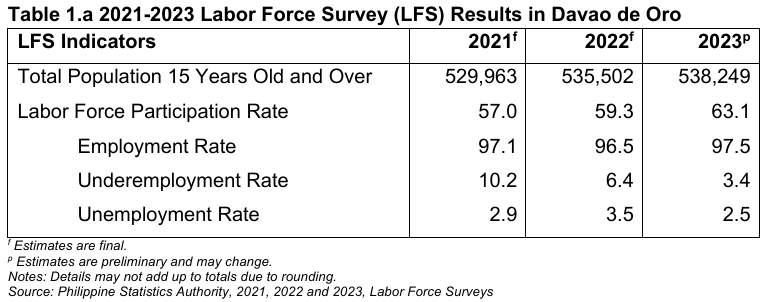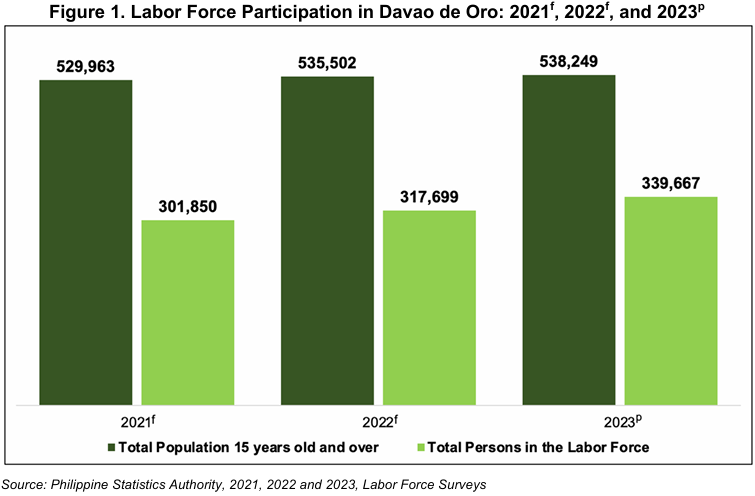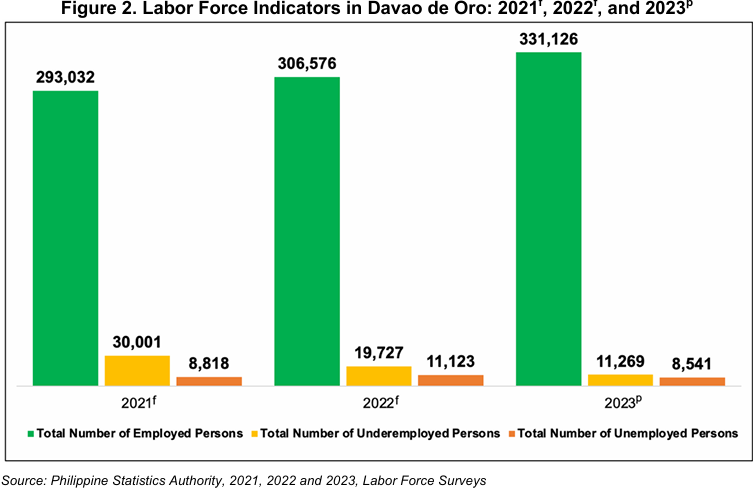Over 60 percent of the population aged 15 years and over were part of the labor force
Of the estimated 538,249 population aged 15 years old and over in Davao de Oro last 2023, around 339,667 were in the labor force. This translates to a labor force participation rate (LFPR) of 63.1 percent. This is 6.1 and 2.4 percentage points higher compared to the LFPR in 2021 and 2022, respectively. (Table 1.a and Figure 1)
The LFPR in the province has increased steadily from 57.0 percent in 2021, to 59.3 percent in 2022, and further to 63.1 percent in 2023. This is equivalent to 6.9 percent growth for the number of individuals added in the labor force in 2023 compared in 2022.


Davao de Oro registers 97.5 percent employment rate
The employment rate in 2023 was registered at 97.5 percent, corresponding to 331,126 Davaoeños who had a job or business out of the 339,667 in the labor force. This shows an upward trend from 97.1 percent in 2021 which slightly dropped to 96.5 percent in 2022 but went up to 97.5 percent in 2023. (Table 1.a and Figure 2)
Moreover, an additional 24,550 individuals were recorded in 2023 who had a job or business which resulted in 8.0 percent growth in the number of people employed in the province.
Unemployment rate in Davao de Oro stands at 2.5 percent
Davao de Oro posted a 2.5 percent unemployment rate in 2023 which is equivalent to 8,541 individuals out of the 339,667 in the labor force. This is significantly lower compared to the 2.9 percent in 2021 and 3.5 percent in 2022. (Table 1.a and Figure 2)
Davao de Oro’s underemployment rate slows down to 3.4 percent
Underemployed persons are employed persons who expressed their desire to have additional hours of work in their present job, or to have additional job, or to have a new job with longer hours of work. In 2023, 3.4 percent of the 331,126 employed Davaoeños were reported to be underemployed. This underemployment rate in the province significantly dropped from 30,001 individuals in 2021 (10.2%) to 19,727 in 2022 (6.4%) and further to 11,269 in 2023. (Table 1.a and Figure 2)

